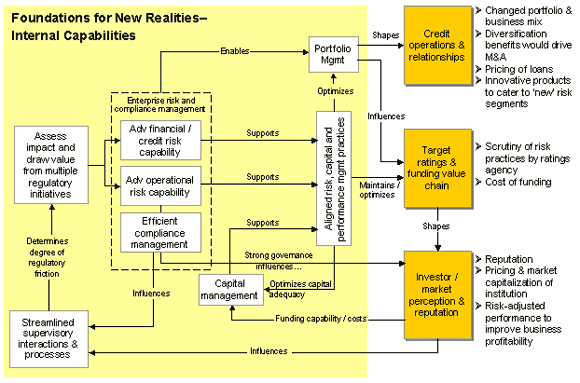London, United Kingdom 5 December 2007
New levels of regulation and competition are influencing risk management expenditures, intensifying the impact of superior risk management practices on financial institutions' success.
Since the turn of the decade, risk management and compliance functions within financial firms have been subjected to intense regulatory scrutiny. The "big four" regulatory themes include: anti-money laundering, accounting standardization (IFRS, FAS), financial reporting (SOX, J-SOX), and capital adequacy (Basel II, or Capital Adequacy Directive). Celent predicts global risk and compliance spending will cross the US$14 billion mark in 2008, up from US$13.6 billion in 2007. In a new report, , Celent details the capabilities institutions should develop if they are to draw value from their risk and compliance initiatives.
As firms go past the regulatory gates, pertinent post-legislation questions have yet to be answered. The current turmoil associated with subprime mortgages and structured credit market (CDOs and other hybrids) highlights the potentially severe impact of actively pursuing distribution (and redistribution) of risks. These new realities demand a level of transparency, structural integrity, and operational controls that, at the moment, leave a lot to be desired.
Current developments should intensify the need for better coordination between the various parts of the credit management value chain, as well as addressing potential conflicts of interest and valuation and interconnected risk management challenges associated with the velocity of market movements. Regulatory and stakeholder scrutiny will increase, and linkages between origination, credit portfolio management, credit control, and administration need to be actively managed.
Other factors (such as the need to balance multiple stakeholder demands for the efficient use of capital, and continuing trends towards an "originate and distribute" paradigm of handling asset portfolios) are both drivers for and a consequence of the move towards new competitive realities of advanced risk management practices.

"Firms undertaking one or more of these regulatory mandates to develop infrastructural building blocks and achieve basic regulatory compliance need to evaluate how risk management and compliance initiatives can add value to their company, as well as what these issues mean from a competitive perspective," says Cubillas Ding, Celent senior analyst and author of the report. "The coming years will be characterized by game-changing dynamics as a result of improved risk management capabilities."
The 32-page report contains 10 figures and three tables. A table of contents is available online.
Members of Celent's Banking and Securities & Investments research services can download the report electronically by clicking on the icon to the left. Non-members should contact info@celent.com for more information.





